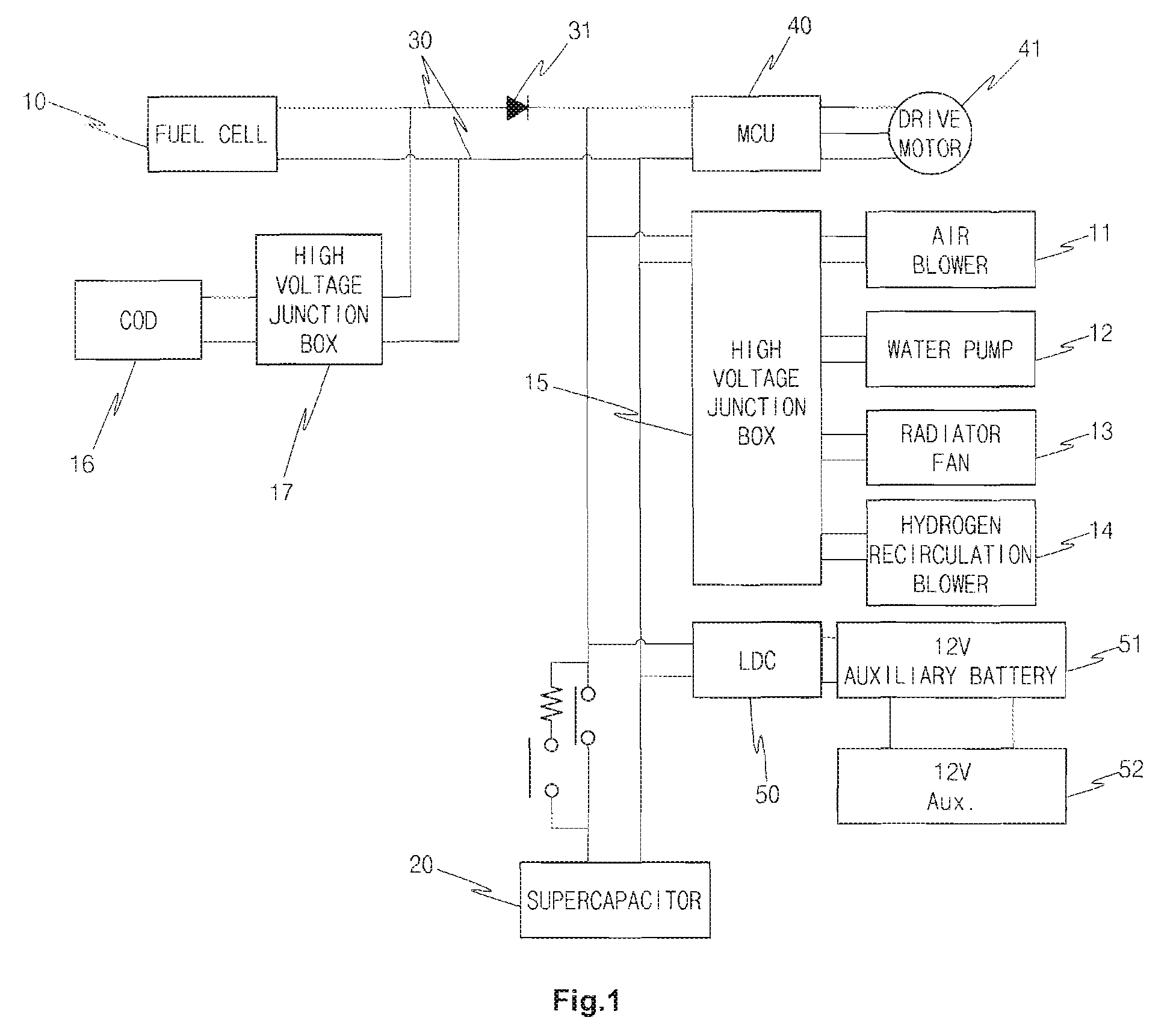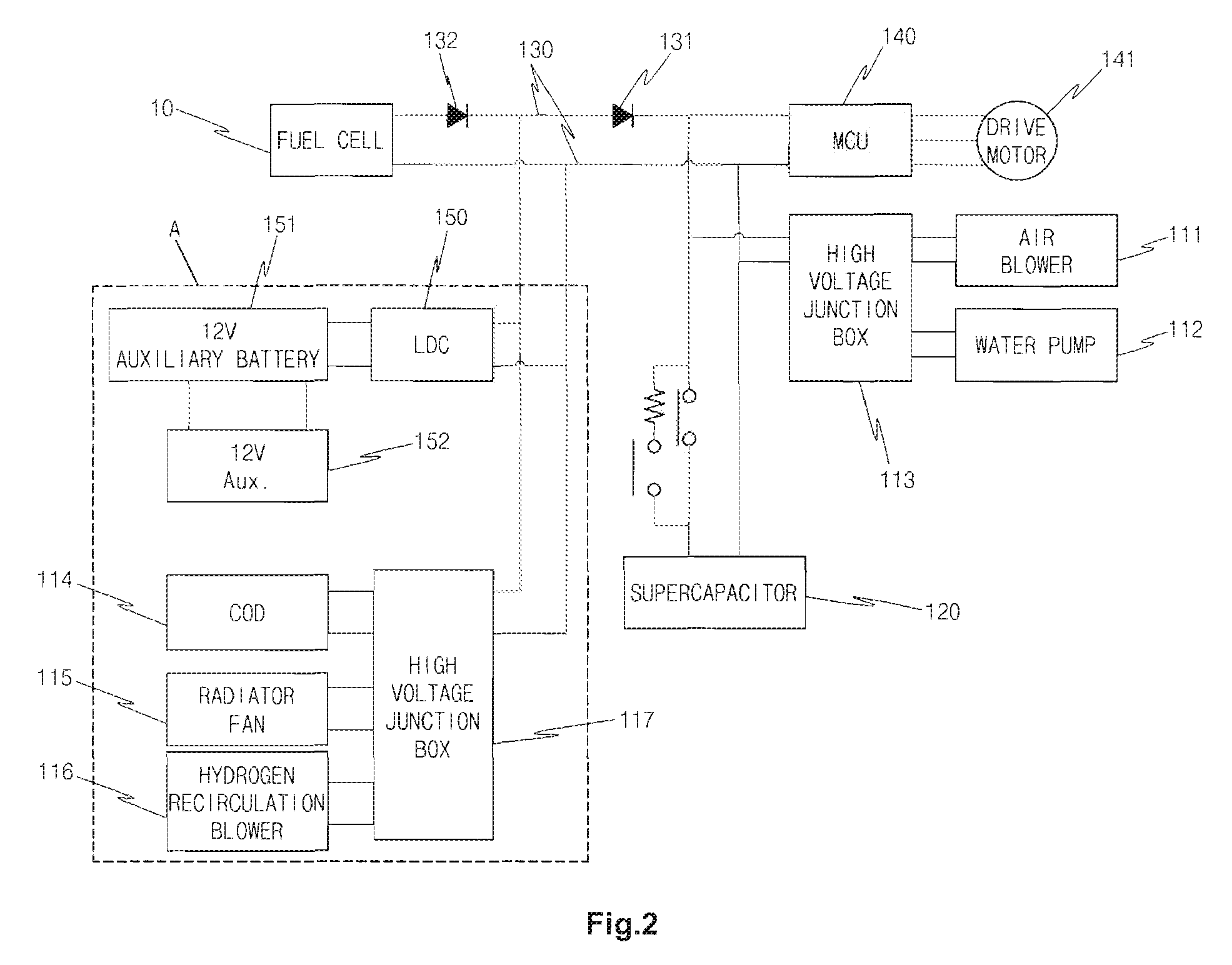Power configuration system for fuel cell hybrid vehicle and method for controlling the same
- Summary
- Abstract
- Description
- Claims
- Application Information
AI Technical Summary
Benefits of technology
Problems solved by technology
Method used
Image
Examples
Embodiment Construction
[0055]As described herein, the present invention includes a power configuration system of a fuel cell hybrid vehicle equipped with a fuel cell as a main power source and a storage means as an auxiliary power source, wherein one or more high voltage components for driving the fuel cell are arranged in front of a first blocking diode installed in a main bus terminal.
[0056]In one embodiment of the present invention, the voltage of the fuel cell is maintained below that of the storage means by consuming electric power of the fuel cell when the one or more high voltage components are driven during regenerative braking.
[0057]In another embodiment, a second blocking diode is added to the main bus terminal at an output terminal of the fuel cell.
[0058]In still another further embodiment, high voltage components for driving the fuel cell are arranged between the second blocking diode and the first blocking diode.
[0059]In a related embodiment, the high voltage components are selected from the ...
PUM
 Login to View More
Login to View More Abstract
Description
Claims
Application Information
 Login to View More
Login to View More - R&D
- Intellectual Property
- Life Sciences
- Materials
- Tech Scout
- Unparalleled Data Quality
- Higher Quality Content
- 60% Fewer Hallucinations
Browse by: Latest US Patents, China's latest patents, Technical Efficacy Thesaurus, Application Domain, Technology Topic, Popular Technical Reports.
© 2025 PatSnap. All rights reserved.Legal|Privacy policy|Modern Slavery Act Transparency Statement|Sitemap|About US| Contact US: help@patsnap.com



